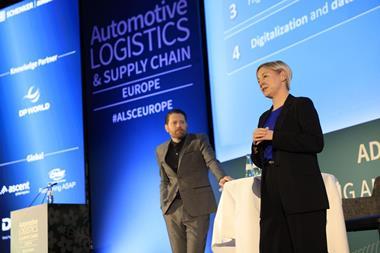Vehicle production in the UK is healthy, but requires agile logistics for its global and local supply chains and these can only evolve with investment in skills training and IT.
Christopher Ludwig contributed to this report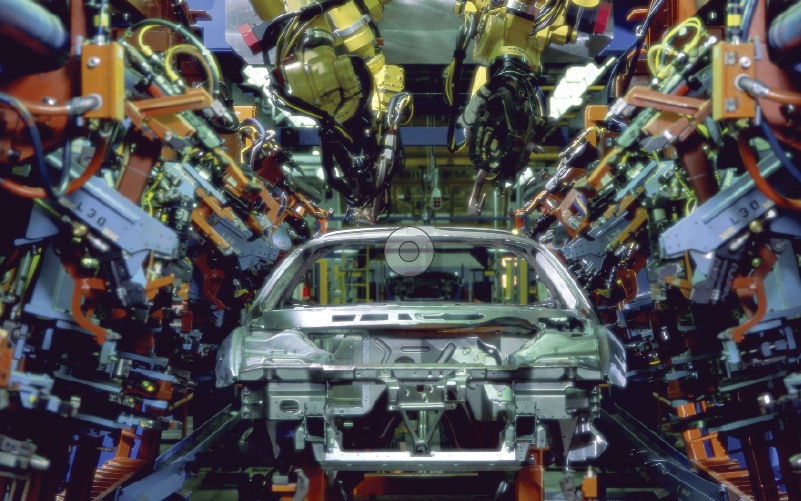
Following the hard economic knocks felt throughout Europe since 2008, the UK has certainly surprised many with its particularly brisk recovery in domestic vehicle sales, production and exports. Sales have led growth across most of Europe, while output has been spurred by recovering demand in the EU, the US and China. The demand for logistics has also risen, including inbound-to-manufacturing logistics as well as import and export-related services.
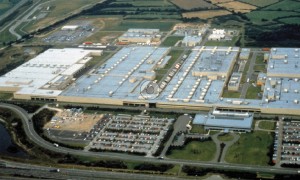
Sales have been rising every month for more than two years and were up 12.5% in the first five months of this year compared to 2013, at nearly 865,000 units. The Society of Motor Manufacturers and Traders (SMMT) has revised its forecast for car sales in 2014 up to 2.4m units from 2.3m (they were 2.26m last year).
In some ways the UK’s recovery in automotive production and assembly has been even more remarkable. Output reached a six-year high in 2013 at more than 1.5m units, 50% higher than in 2009. The industry is also seeing a slew of investments. Nissan recently launched a series of new models for its Sunderland plant and Toyota’s production rates have also risen at its plant in Burnaston near Derby.
"Foreign supply has also rebounded with global automotive growth. This is putting pressure on the supply base to meet this demand, particularly where OEM demand has exceeded forecasts with the suppliers
" - Neal Williams, Priority Freight
Vauxhall’s Ellesmere Port assembly plant has overcome fears of closure to prepare to produce the new Astra in 2015. Most notably, JLR has been expanding its plants in Solihull, Castle Bromwich and Halewood, and is now running a substantial number of its lines on three shifts. For the financial year 2013-2014, JLR reported profits in excess of £2.5 billion ($4.18 billion).
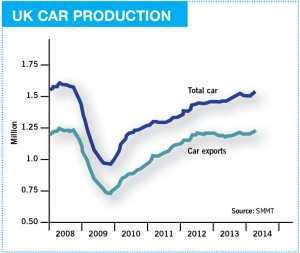 click to enlarge
click to enlarge“The outlook through to 2017 looks strong, with a series of new models and increased capacity coming online,” commented Simon Heath, KPMG’s automotive M&A specialist, in a recent analyst note. “UK production is forecast to increase to 2m vehicles by 2017 and this is attracting foreign investment into the UK’s supply chain. This increased investment is crucial and will enable smaller manufacturers to finance the anticipated uplift in production volumes.”
That 2m figure would surpass the country’s previous record for car production of 1.92m cars, way back in 1972.
There are, of course, differences in 2m units today compared to that of more than 40 years ago. More parts are developed and manufactured by suppliers, compared to the massive vertical integration of the past. British Leyland’s Longbridge plant, for example, employed around 250,000 people in the late 1960s, whereas Nissan builds more cars per year in Sunderland with just 2% of the former’s workforce.
As has been widely discussed, UK assembly plants also tend to have lower levels of supply localisation than their German equivalents by value (in cubic weight the proportion is fairly high, however). A large share of material is imported from the EU. While carmakers, including JLR and Toyota, are increasing UK suppliers, production depends heavily on an efficient logistics network to maintain competitive production.
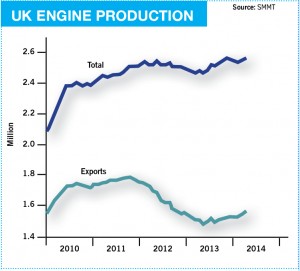
UK Tony Walker said logistics was one of the carmaker’s biggest challenges in the UK. Toyota receives about 120 trailers per day from across Europe, including Turkey, with 15 trailers a week from Poland, and 35 from France.
Walker pointed out that the logistics challenges manifest themselves in market seasonality. “Our demand is very volatile and there’s a lot of fluctuation. This is not the fault of suppliers. It’s all down to market season,” he told attendees.
Mini’s assembly plant in Oxford is a good example of a supply chain that is both global and locally integrated. According to Rebecca Baxter, manager in external communications at the plant, more than 6,000 different parts are supplied for the production of each Mini. [sam_ad id=6 codes='true']
“With around 350 different supplier locations worldwide, the organisation of parts supply to support production at Plant Oxford is vital for efficient and cost-effective manufacturing,” says Baxter. “The plant uses a ‘just-in-time’ supply strategy, reducing the need for costly stock storage. Similarly, this strategy also reduces the amount of components line-side in the assembly process.”
Many supplier parts are manufactured and sequenced in line with specific customer requirements and are delivered directly to the plant. Some of Plant Oxford’s suppliers are also based on-site, assembling their individual parts, and supplying directly to the line. This further reduces stock in the supply chain, and can give an immediate reaction to any changes in production.
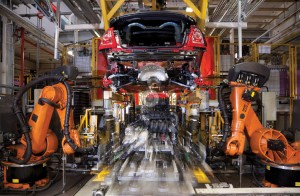
Near versus global sourcing
As part of the BMW Group, Mini is connected to a supply chain with strong roots in Germany and Central Europe. As a premium manufacturer, it is also notable for a huge array of options, further complicating the supply chain. For some, such a combination of complexity and distance suggests supply chain waste. General Motors, for example has made it clear that it wants to bring suppliers closer to its plants, especially in North America.
UK growth, together with such challenges, has raised debates about ‘near shoring’ similar to those happening in the US. JLR, in particular, has committed billions to the UK supply chain in sourcing for its new products. Earlier this year it also localised engine production further with a new factory in Wolverhampton.
Neal Williams, group managing director at Priority Freight, an expedited freight provider, notes that there has recently been a reverse in the trend for offshoring component manufacture. “This has meant that component supply from the UK has strengthened. There have been recent announcements of tier suppliers recruiting within the UK to meet this demand,” he says.
"Supply [doesn’t have to be] to be local to demand... providing a customer can tap into a network which delivers economies of scale with reliable daily services and delivery solutions" - Dionne Redpath, Europa Logistics
At the same time, he adds, rebounds in global growth mean that even ‘local’ suppliers will be under pressure to supply wherever necessary. Carmakers building on global platforms, for example, will often pivot supply to meet demand depending on available capacity.
“Foreign supply has also rebounded with global automotive growth. This is putting pressure on the supply base to meet this demand, particularly where OEM demand has exceeded forecasts with the suppliers,” says Williams. “We have seen a correlating increase in expedited contingency logistics, or premium freight, to win back time lost in delays to supply in efforts to meet this demand.”
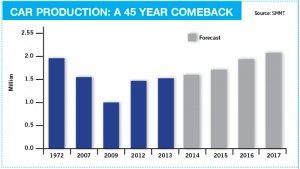
Brad Brennan, managing director of emergency freight provider Evolution Time Critical, states that trends such as increasing model variance – and within that a vast array of trim options – are driving the need for suppliers to be flexible in their ability to meet fluctuating demand. “The automotive industry is no different to many others in that the work goes to wherever offers the most cost-efficient and reliable supply,” says Brennan. “The only difference is, OEMs are beginning to shorten their focus for short-term benefits, rather than commit to a long-term supply base that offers little flexibility.”
Bridging the gaps
Brennan does not necessarily see the UK or any other automotive supply chain becoming more local. Rather, they are becoming more agile, with OEMs able to increase the frequency at which they change their supply base. “For example, we have worked directly with a major vehicle manufacturer to move a manufacturing location across a continent, using premium freight to bridge any resultant break in supply, with no delays, and allowing a shift of live production with no risk to the logistics network.”
"While the UK appears to have the physical capability to keep up with demand, the longer-term downfall could be a lack of available logistics talent. It’s like a leading Formula 1 team developing a leading car and forgetting to employ a driver" - Brad Brennan, Evolution Time Critical
Dionne Redpath, sales and branch network director at Europa Logistics, also does not see the issue of one as global versus local. She believes that even the most efficient logistics schemes aren’t necessarily about being as close as possible to consumption points, but rather they rely on access to wider shipping and delivery connections.
“Some believe that supply has to be local to demand, but this isn’t always necessary, providing a customer can tap into a network which delivers economies of scale with reliable daily services and delivery solutions,” she says.
As an example, Redpath points to an upcoming logistics hub that the company plans to open this summer in Dartford, on the border with Kent, east of London, which will bring together contract logistics with daily inbound and outbound services to and from major European cities using double-manned trucking.
One key aspect of the logistics centre will be that it can combine imported material from Asia with processing and fulfilment for parts to EU manufacturing locations. Redpath asserts that this can be even more economical than supplying EU markets from another mainland EU location, which may not have the added advantage of being near to key ports for inbound supply.
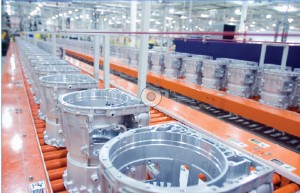
“Europa’s Birmingham facility already achieves this high level of performance, bringing inbound airfreight from the Far East to fulfil orders for onward distribution to production sites in the EU and overseas within tight timescales,” she says. “Dartford will enhance that offering and our customers will see further benefits.”
Neal Williams agrees that the choice is not always between local supply or offshore. A tier one supplier may need to be close to an assembly plant, but lower tiers are often global in their supply footprint. “This is where logistics engineering comes into play, to choose the locations that will deliver the most efficient, effective and stable base to meet inbound and outbound demands,” he says.
By that token, Williams sees risks in rushing to move tier suppliers to the UK for the sake of supplying a plant there, rather than serving a wider network. “It is a dangerous game for a tier to be reliant and to locate itself close by or even within an OEM, should the commercial relationship with the OEM fail,” he says. “For a tier to be strong and deliver effectively to OEMs, the strategy has to be local supply along with global export, as is the strategy with the OEMs themselves.”
Skills shortages
With predictions that future sales and production figures are likely to increase over the coming years, and the UK government keen to rebalance the economy further towards manufacturing, university education and training in logistics will be important in making sure the UK can keep up with the global automotive industry and economy.
One example thus far is the aforementioned Enscite, which was created to support small-and-medium sized companies in the aerospace, automotive and rail sectors’ supply chain. A collaboration between Derby City Council, the University of Derby, Aston University and Cranfield University, Enscite will deliver business improvement programmes, run workshops and support investments in new technology, including access to a £1m technology fund.
Europa’s Dionne Redpath suggests that the government and industry have so far worked together effectively to develop automotive manufacturing and logistics. “The UK automotive industrial strategy, alongside various government funding initiatives, research and development partnerships and industry activities, means there is a shared commitment to making the automotive industry more secure and globally competitive over the long term,” she says. “This can only be a good thing for related sectors – such as logistics – which rely on its performance to secure contracts, generate increased global activity and future investments.”

However, recent research by the northeast UK-based First Class Technical Recruitment reports a skills gap in the country’s automotive sector, which may impact negatively on the logistics and supply chain management market at precisely the time it is most needed. The report says 78% of companies in the industry believe there is a shortage of skills across the board and that more is needed to source candidates from other industries with transferable skills.
“While the UK appears to have the physical capability to keep up with demand, the longer-term downfall could be a lack of available logistics talent,” agrees Brennan. “It’s like a leading Formula 1 team developing a leading car and forgetting to employ a driver.”
Similarly, a report from the Supply Chain Leaders Forum and the Centre for Supply Chain Research states that demand for automotive supply chain professionals far exceeds available supply, which is leading to a notable shortfall and struggle for OEMs to recruit successfully.
“A lack of suitable professionals entering the workplace will be exacerbated by the expected increase of retirements within the profession midway through the next decade,” adds Brennan. “We have already seen evidence of this shortfall ourselves, as OEMs that we have worked with have expressed a difficulty in recruiting suitable supply chain professionals. A possible solution could be for government legislation to drive universities and research institutions to work directly with vehicle manufacturers to provide the next generation of honed logistics professionals.”
"For a tier to be strong and deliver effectively to OEMs, the strategy has to be local supply along with global export, as is the strategy with the OEMs themselves" - Neal Williams, Priority Freight
Looking to technology
Another source of support for the logistics of the future is in IT services. Barloworld is a software company dealing specifically in supply chain solutions. Fraser Ironside, its head of strategic modelling, helps businesses plan and execute their supply chain strategies. Barloworld has worked with Ford and Volkswagen among others, deciding where best to locate distribution centres within a given country to minimise distribution costs, as well as assess final mile distribution to dealerships. “If the strategy isn’t right, you’ll lose money,” Ironside warns.
Neal Williams agrees that IT developments would also benefit the UK supply chain. “Our clients require more than just timely cost-efficient delivery of material,” he says. “Those more progressive within the auto sector are realising gains by integrating systems, sharing information, creating efficiencies, identifying synergies and sharing gains. Our biggest internal investment for the last five years has been and will continue to be within IT.”

Derek Thomason, general manager at Unipart Expert Practices, also describes the need for more visibility and component tracking. “The way that data is captured can always be made easier,” he says. “We have one of the most advanced logistics networks in the world, but will we have increased road congestion? Can we use other modes of transport?”
The prevailing attitude towards logistics in the UK is certainly one of optimism – a recent survey on confidence in the sector came in with 74% having a positive outlook. New facilities and investments are adding to the sense of improvement felt across the sector. While localisation of more of the supply base is seen as necessary to many OEMs in having a more optimal logistics network, it may not be the most crucial point for the total supply chain.
Even more vital for manufacturers may be to have networks flexible enough to meet changing demand, as well as to address a lack of skills in logistics. Meanwhile, collaboration and effective use of IT systems will be crucial to determining the continued success of moving material to the UK’s growing production base. (Read here for more on the UK's outbound and export logistics.)

























![Global[1]](https://d3n5uof8vony13.cloudfront.net/Pictures/web/a/d/s/global1_726550.svgz)










